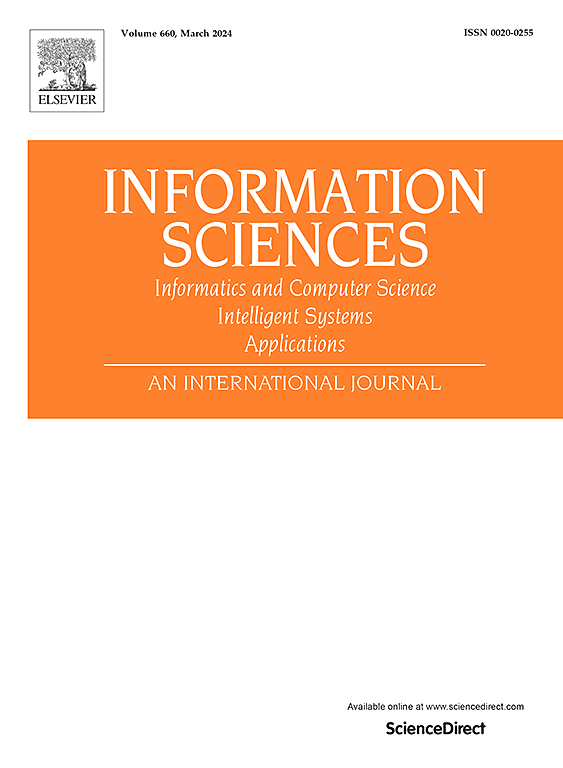A graph regularized overlapping community discovery framework with three-way decisions
IF 8.1
1区 计算机科学
0 COMPUTER SCIENCE, INFORMATION SYSTEMS
引用次数: 0
Abstract
Community detection is essential for complex network analysis. Most existing approaches focus on hard community partitioning, and a few have investigated overlapping community structures, which are important but difficult to handle in practical applications. This paper presents a graph regularization-based framework for overlapping community detection, which integrates topological information and applies a theoretical three-way decision method to handle uncertain knowledge. The proposed models, , , and , employ NMF, YNMF, and AEs with graph regularization terms for initial partitioning. The membership degrees of each node across different communities are then used for re-partitioning through three-way decisions. These models apply subspace clustering principles to incorporate basic network structure. To address the limitations caused by sparse network topology, the graph regularization terms encourage similar community membership among connected or nearby nodes, resulting in more coherent communities. In addition, three-way decisions, guided by node structural similarity, detect overlapping clusters and participating vertices. The proposed models not only identify community memberships but also reveal the overlapping community structures within networks. Empirical evaluations across both artificial and empirical networks indicate that our method outperforms existing advanced overlapping community detection techniques.

一个具有三向决策的图形正则化重叠社区发现框架
社区检测是复杂网络分析的基础。现有的方法大多侧重于硬社区划分,少数研究了重叠社区结构,重叠社区结构很重要,但在实际应用中难以处理。本文提出了一种基于图正则化的重叠社区检测框架,该框架集成了拓扑信息,并采用理论三向决策方法处理不确定性知识。提出的模型GNMFO_TW、GYNMFO_TW和GAEO_TW使用带图正则化项的NMF、YNMF和ae进行初始分区。然后,通过三向决策,使用跨不同社区的每个节点的隶属度进行重新划分。这些模型应用子空间聚类原理来整合基本的网络结构。为了解决稀疏网络拓扑造成的限制,图正则化术语鼓励连接或附近节点之间的相似社区成员,从而产生更连贯的社区。此外,在节点结构相似度的指导下,三向决策检测重叠的聚类和参与的顶点。提出的模型不仅可以识别社区成员,还可以揭示网络中重叠的社区结构。人工和经验网络的经验评估表明,我们的方法优于现有的先进的重叠社区检测技术。
本文章由计算机程序翻译,如有差异,请以英文原文为准。
求助全文
约1分钟内获得全文
求助全文
来源期刊

Information Sciences
工程技术-计算机:信息系统
CiteScore
14.00
自引率
17.30%
发文量
1322
审稿时长
10.4 months
期刊介绍:
Informatics and Computer Science Intelligent Systems Applications is an esteemed international journal that focuses on publishing original and creative research findings in the field of information sciences. We also feature a limited number of timely tutorial and surveying contributions.
Our journal aims to cater to a diverse audience, including researchers, developers, managers, strategic planners, graduate students, and anyone interested in staying up-to-date with cutting-edge research in information science, knowledge engineering, and intelligent systems. While readers are expected to share a common interest in information science, they come from varying backgrounds such as engineering, mathematics, statistics, physics, computer science, cell biology, molecular biology, management science, cognitive science, neurobiology, behavioral sciences, and biochemistry.
 求助内容:
求助内容: 应助结果提醒方式:
应助结果提醒方式:


